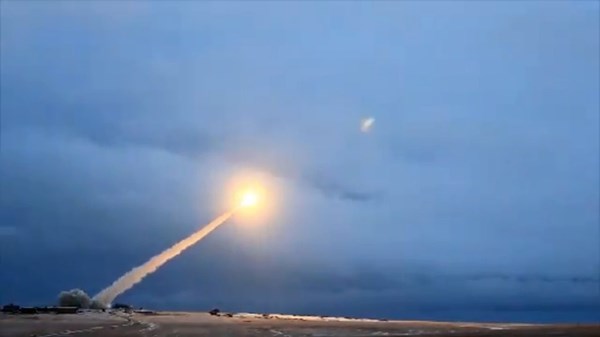U.S.: Russia preparing another test launch of nuclear-powered Burevestnik missile
Russia may be preparing to try another launch of a nuclear-powered missile Burevestnik (Skyfall), the previous tests of which turned into a tragedy and the death of five people.
A new test of one of five types of super-weapons announced by President Vladimir Putin in 2018 could take place at one of the testing sites near the Arctic Circle, CNN reported.
Photos taken on Aug. 16 by private company Capella Space showed that large shelters were erected at the test site in two months period to protect the missile and personnel, and when they were removed, there was "a large object on the launch pad, which is a possible SSC-X-9 Skyfall launcher," said Jeffrey Lewis, an arms expert at the Center for Nonproliferation Studies at the Middlebury Institute.
“There are also a significant number of objects next to the launch pad that are likely vehicles and shipping containers. None of these signatures were present the last time the site was imaged optically in June,” Lewis said.
Earlier, Russia published a “notice for mariners” warning about high-risk activities from August 15 to 20 near the test site Pankovo on Novaya Zemlya.
Some experts, according to Lewis, call the Burevestnik a "flying Chernobyl." The first attempt to launch it in November 2017 was unsuccessful. A radioactive shell fell into the Barents Sea, and one or more rescue operations were carried out to remove it.
In August 2019, the Russian vessel Serebryanka with equipment for working with radioactive substances was again in the Barents Sea when the explosion occurred. It caused increased radiation levels in the city of Severodvinsk and the radioactive cloud eventually reached Norway.
Five people, who were testing a nuclear mini reactor, were killed, said later the scientific director of the All-Russian Research Institute of Experimental Physics in Sarov Vyacheslav Solovyov.
The tests, according to him, were conducted as part of the scientific program of the Sarov Nuclear Center, and preparation for them lasted more than a year.
The Burevestnik missile, the fruit of the Russian state arms program that cost the Russian budget 20 trillion rubles ($270 million) over 10 years, was first presented by Putin in his address to the Federal Assembly in March 2018.
The use of a nuclear reactor, in principle, "can give it unlimited range and the ability to fly around American radars and interceptors," Lewis admits.
"There are substantial questions, however, about whether the system can be made to work successfully, to say nothing of the threat that testing this system may pose to the environment and human health," he doubts.
Although numerous sources claim that Russia’s Burevestnik hypersonic nuclear-powered cruise missile will be adopted into the armament within the next 5-6 years, some Russian news outlets believe the missile will be completely unsuitable for warfare.
“As soon as the Burevestnik is spotted approaching the target, it will be relatively easy to shoot down, because according to current estimates, the missile has a subsonic flight speed. If there is an interceptor aircraft in the air, under favorable circumstances it could shoot down the Burevestnik with a salvo from its on-board guns, like in a training target. Neither can we rule out the possibility of accidental detection of the missile in flight by some kind of missile frigate or aircraft that finds itself in the right place, or by an active anti-air system,” writes the Military Review.
In the author’s opinion, the Burevestnik assumes that the enemy will be stupid and wait until the missile strikes.
“Betting that the enemy will be hopelessly stupid, in my opinion, is exclusively unreliable in principle, and developing a complex and long-term type of weapon according to such a tactic is hard to call anything but recklessness. The entire tactical application of a new type of weapon should take into account an intelligent enemy and all possible countermeasures at his disposal,” the article states.
It is not known how objective this opinion is. Other sources believe that the Burevestnik missile has a hypersonic flight speed, which would make it significantly harder to detect and to destroy.
